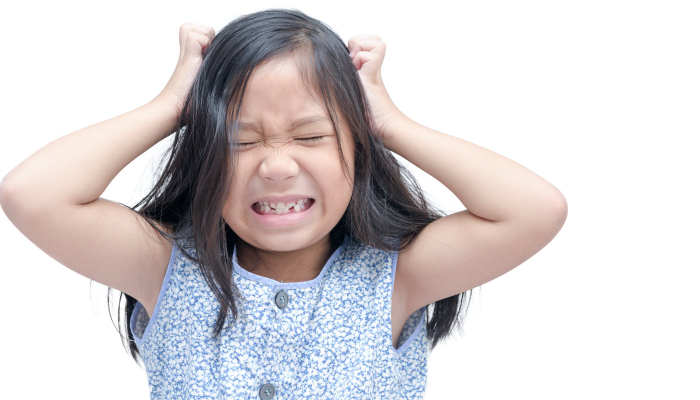By Guest Blogger Carrie Friesen, MD
Lice, scabies, pinworms… oh, my! These common bugs can affect anyone, regardless of sex, race, socioeconomic status, or personal hygiene.
When you get the dreaded email that another student in your child’s class has lice, what thoughts go through your mind? How would you feel to discover that your child is infested with one of these bugs? While we all want to think that it could not happen to us, the truth is that each of these is quite common. If you are lucky and one of these common bugs has not already affected your family, chances are good that it may happen one day. After reading this article, you will hopefully understand more about these three common bugs, and not fear (i.e. freak out!) if and when they happen to you.
Head Lice
Head lice are estimated to infect 6-12 million children each year in the US. They most commonly affect preschool and elementary school aged children. The head louse is a parasitic insect that feeds on human blood. It moves by crawling, and infection occurs by direct contact with infected hair. The female louse lays eggs (called nits) at the base of the hair shaft. These can look like dandruff, but are firmly attached to the hair shaft. Symptoms of a lice infestation include an itchy scalp, a feeling of something moving in the hair, irritability and difficulty sleeping, and sores on the head from scratching.
Treatment is with a medication (either over the counter or prescription). Be sure to follow the directions carefully. Machine wash and dry clothing, bed linens, towels, and other items worn by the infected person with hot water and high heat (or store in a sealed bag for 2 weeks). Soak combs and brushes in hot water for 10 minutes. Vacuum the floor and furniture where the infested person sat or lay. Generally everyone in a household or close contacts of the infected person should be checked, and those with an active infection also treated.
Scabies
If your head is not feeling itchy, scabies might make the rest of your body feel itchy! Scabies affects 1 million people in the US each year (300 million worldwide), most commonly children and young adults. It is caused by the human itch mite, which burrows into the upper layer of the skin where it lives and deposits eggs. The most common symptom of scabies is intense itching, especially at night. A bumpy, itchy rash is present, and tiny burrows on the skin are sometimes seen. The mite is usually shared between people via direct, prolonged, skin-to-skin contact. However, it could be spread indirectly through clothing, towels, or bedding used by an infested person.
Treatment requires a prescription scabicide. This is recommended for everyone in the household at the same time. Itching can last several weeks after treatment. Washing of items, as recommended above for lice, is recommended to prevent reinfection.
Pinworms
Pinworms are the most common worm infection in the United States, infecting approximately 40 million people each year (almost 1 billion worldwide!). People most commonly become infected by swallowing infective pinworm eggs found on fingers, under fingernails, on clothing, bedding, or other contaminated surfaces, or in contaminated food. The most common symptom of a pinworm infection is itching of the anal area, especially at night. Others include difficulty sleeping, irritability, vaginal itching, and stomach pain. However, it can also be asymptomatic.
Treatment is with two doses of medicine, spaced two weeks apart. This medicine can be over the counter or by prescription. However, a health care provider should be consulted before treating a suspected infection. All household contacts or caregivers should be treated at the same time. The best way to prevent a pinworm infection is good hand hygiene after using the toilet, changing diapers, and before touching food. A daily morning shower and change of underclothes is helpful. Also, frequent laundering of towels, sheets, nightclothes, and underclothes, can help prevent reinfection.
Rest Assured
A common theme for all three of these bugs is that they are very itchy (especially at night), are treatable, and can affect anyone. So, when you receive the email about a classmate of your child getting diagnosed with one of these bugs, say “yuck” but have compassion for the affected family. Stay calm and begin treatment immediately when your child brings one of these bugs home. Call your child’s pediatrician, as they encounter these infestations regularly. The tiny bugs are pesky, but do not have to ruin your life. Besides, if catching one of these bugs is the worst thing that happens to you or your child one day, then, as my mom would’ve said, it was a pretty good day.
Want to see more blogs like this and also get notifications on local events and happenings? Subscribe to our free weekly newsletters here.
















